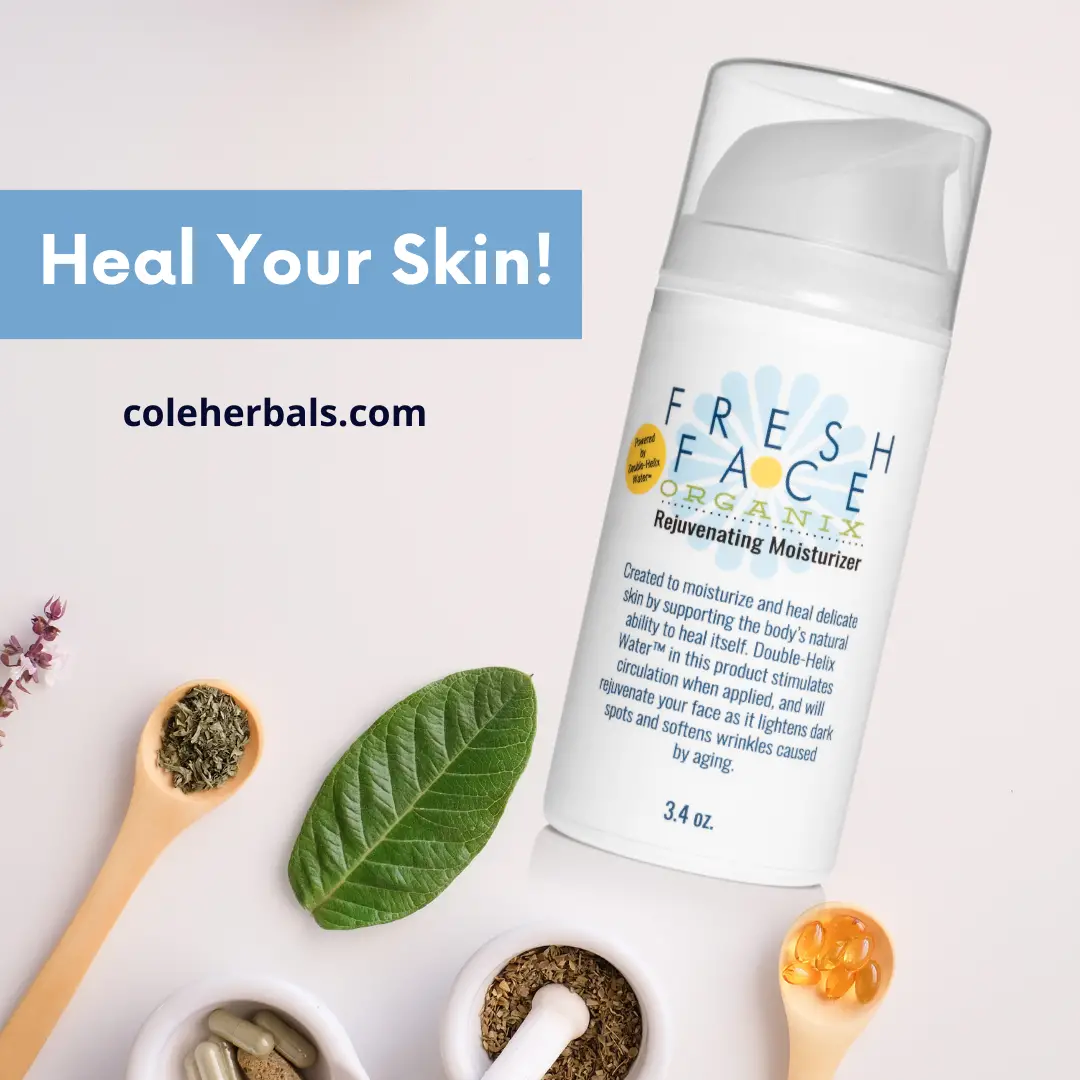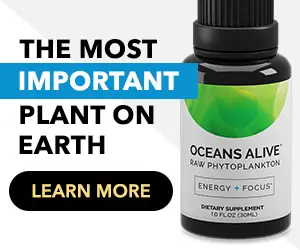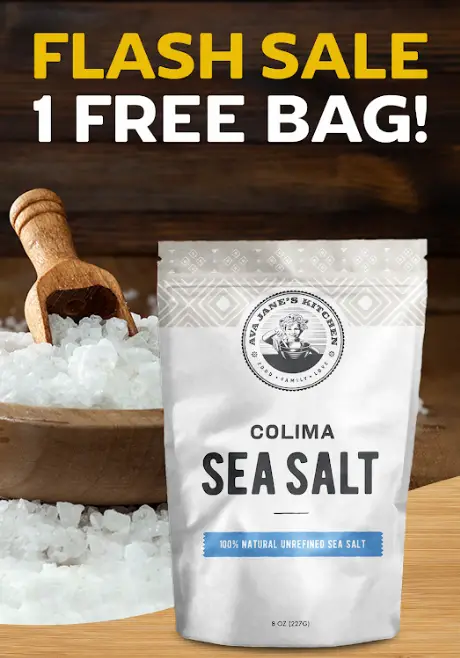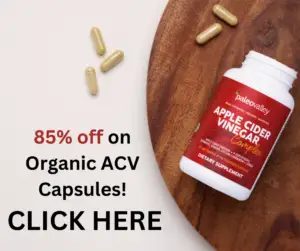
Kristina Carrillo-Bucaram overcame hyperglycemia with a raw, mostly-fruit diet and now runs the U.S.’ largest organic co-op.
Despite the diet’s rising popularity, there are still many people in the mainstream who consider a raw food diet, especially one based around fruit, to be a little, well, extreme.
But making the switch to a “FullyRaw” diet was the best decision Kristina Carrillo-Bucaram, 26, ever made, as it allowed her to overcome a debilitating bout with hyperglycemia at age 18.
Now known as FullyRaw Kristina by over 285,000 followers on her Facebook page, Carrillo-Bucaram is also the founder of the largest raw, organic produce co-operative in the United States, in Houston, Texas, and she graduated from Rice University on the top 5% of her class in 2009 with a triple major in Kinesiology specializing in Health Science, Raw Foods, and Fasting.
Recently, she sat down for an in-depth interview afterward with Nick Meyer, founder of AltHealthWORKS, Steven Bancarz of the Facebook page Spirit Science and Metaphysics, and David Benjamin of the website and Facebook page Healthy Wild and Free.
AHW (NM): So Kristina, how are you today?
KCB: I’m doing fabulous, thank you for having me.
AHW: And what are you eating at this point in time?
KCB: I’m eating raw okra…it’s delicious and not slimy by the way.
AHW: I would definitely agree. So, how’s the co-op going right now?
KCB: The co-op is amazing. So for those of you who may not know, I run the largest co-op in the U.S. right now, it’s called Rawfully Organic and it’s a local non-profit food cooperative that aims to distribute, educate and feed families and friends of all ages; raw foods and raw food info…We have a little bit over 15,000 registered members just in the Houston area alone; we feed over 700 families a week, and we sell fresh juices. We have just an amazing community that’s completely volunteer based and has come together to kind of create a grassroots movement to help create change around real food.
AHW: And what is the physical set-up of the co-op right now…Is it like an open-air pavilion type thing?
KCB: Actually, we pitch up our own tents and then we take them down each time. We’re in the museum district of Houston and it’s really, really fun, it’s a really nice and beautiful area with lots of traffic so yeah, I love it. Honestly it’s really fun, I can’t say anything else, we get to support local farmers along the way and it’s kind of a blessing to have a local community that believes not just in eating real food but around creating change around that food.
AHW: Do you only sell organic?
KCB: It’s only organic but I will say though, we have six farmers that we support full-time right now which is really great, that means they don’t have to grow for other farmer’s markets or things like that. So let’s say a farmer comes to me and says, “We’re sustainable…and like, “Oh…..we’re organic and I can’t afford certification, what do we do?”
So basically we have a donation page page on our website where people can donate to help them get certified…And we’ve helped I would say two to three farmers get that which has been really great.
AHW: And has supporting these farms allowed them to grow too?
KCB: Absolutely, one of the farms I’m closest to, when I first met them they only had 50 acres and here the co-op stands six years later and they have over 200 acres worth of land, and they grow just for us so that’s pretty awesome; supporting land usage and the community and using it to grow fresh food, it’s really great.
AHW: So how did the whole thing take off and become what it is today, mainly through collaboration and cooperation? Financially, were there issues?
KCB: The whole thing started because when I was 16 to 18, I had hyperglycemia and I overcame it when I adopted a raw food diet. I now call it just eating FullyRaw which is my brand, but me going through college and trying to afford food for my family, I ended up just starting this co-op with 12 people in my living room and it literally grew to what it is today; and it’s been such a blessing, I will say that. Going back you asked if it was…Yes, it’s run by volunteers, and it is totally non-profit. The purpose isn’t just to be able to discount produce for people but also a way to kind of share the message (of real, organic and raw food).
AHW: Describe the scene for us a little more, is it like a farmer’s market vibe kind of or does it have people shuffling in and out all the time, or is it a mix?
KCB: From the outside it looks like farmer’s markets.. Oh yeah, people shop off of tables, but the real bargain deal is in the box, when you come you will actually see the whole parking lot covered in boxes of organic produce. Volunteers come and organize, and put and help them put it together. It takes all day to set up and a few hours to take down; lots of people come during a certain time period to pick up their boxes that they ordered. Most order online beforehand and some come and pick up an extra box. We’ve got a fruit box, mixed fruit and veggie box, and really huge family-size boxes. We do exchanges, and you can always purchase more in addition to your box. We also make fresh juices now that are called FullyRaw juices.
AHW: So if someone want to start their own organic co-op in their community, what is one piece of key advice you have for them?
KCB: I would say, find people who are passionate about this to work with you and then just starting buying food in bulk and sharing cases together.
AHW: So that’s one of the big keys, just start buying in bulk?
KCB: Absolutely buy in bulk, it’s less expensive.
AHW: Of course there are people who would say, “Oh, all that produce is gonna go bad!”
KCB: Well, that’s why you share it…And anybody who wants to be in a co-op will recognize you are buying into a co-op because you need abundance. Why did Costco get so popular? It’s because you can get a lot of what you needed and get it at a discount rate. A co-op, exact same thing just with organic food.
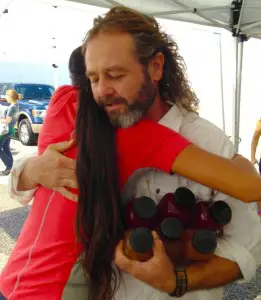
The Rawfully Organic Co-op in Houston has over 15,000 members and many have been able to drastically improve their health.
DB: How do you start buying in bulk, like, where exactly would you go?
KCB: That was one of my biggest struggles, and that’s why I had to find the huge distributor that I did, so the first thing I would say is, start networking with people who know food sources in your area and see if they can start providing food for you….Starting Googling distributors for sure.
AHW: Have you heard of other people creating similar ventures, and especially ones who’ve been inspired by the Rawfully Organic Co-op?
KCB: I know of a few people who run small co-ops, but I don’t know of anyone doing anything like we’re doing in Houston.
There are other things like CSAs, community supported agricultures, but those are simply individual farms growing for specific communities. At a certain point they do get capped because one farm can only grow for so many. But it’s really great because our co-op is a central distribution source for farmers to bring their food and for us to distribute it so its actually really great.
AHW: And about the raw food diet itself, do you know approximately how many of your friends are on it now since the co-op became so huge? And do they take advice from you on diet?
KCB: When I first started this co-op I have to say maybe one did. Now I have to say it’s just an amazing community, everybody who’s bought, at least 15,000 people have been exposed to the raw food message for sure. I know this because I send them videos and send them recipes put them in their boxes and things like that, and we have amazing get-togethers each month if not three times a week where we all just sit around and eat fruit. It’s pretty awesome, I love it.
AHW: Are there any stumbling blocks people have with switching to raw diet and how would you tackle those?
KCB: I always say it’s not eating the food that’s difficult but the emotional aspect that holds people back because anyone can stick raw food in their mouth, but it’s taking full responsibility of what you’re putting into your body. Like if you’re going to put something else in your body, having the power and control to say, “No, I’m going to eat fruit instead.” Another great tip I tell people is, if you’re not fully satisfied, you’re not going to have to do bad things. So always have fruit on you and always make sure you’re going to be filled up on fruit; carb up get enough calories in and you wont want other junk food; that just happens when you’re satiated you don’t want other things.
AHW: Have you heard from people in climates such as ours (Michigan) who have tried to switch to a raw diet and maybe they say something like, “I might need to have warmer foods every now and then?”
KCB: I actually have YouTube video called how to eat FullyRaw in winter (see below) and I do kind of like a parody on all the funny things I do in winter to help get me through cold weather and still eat raw foods…
AHW: You have cold weather down there?
KCB: So, it can get into like the 50s-40s but…
AHW: I’m very inquisitive, sorry!
KCB: I know it is, it’s funny, that’s why I say it’s kind of a parody video, but it’s actually funny. Most people don’t realize this but the more you eat cold food and then hot food it can actually mess up your body’s internal temperature.
AHW: So just “stick with the raw,” is that what you’re saying?
KCB: I say stick with the raw! You said that in such a serious voice, “Stick with the Raw.” Yeah, I do. Mmmhmm.
AHW: You heard it here first!
But yeah, so I was in a health food store last year and I got a green smoothie and I also got some soup, some organic soup. It must have been 10 degrees that day in Michigan and snowy, and I drank the smoothie and I felt so cold from it. It was a pretty cold smoothie but then I had the soup and I was like, “Man, my body was just craving that right now.”
KCB: So if you had drank an average temperature smoothie, had it not been cold you would have been okay. So let’s say you drank a smoothie that was tepid, like room temperature but you still felt cold like 20 minutes later. So maybe perhaps you’re not feeling cold but your body was going through a detox reaction because when your body is cleansing you can actually feel very cold, and it’s also natural for people who go on a low-fat diet for a long period of time to lose a lot of body fat. They will naturally get colder, but the easy solution is to go get some exercise and build some muscle because muscle is heat, it keeps you active and strong.
AHW: Anybody else have a question?
SB: Okay so I’m going to ask you this. Being a student living a busy life, or the corporate life, in the working world, what amount of food do you have to bring with you throughout the day (as part of a raw 80/10/10 style diet like Kristina’s) and what is the best way to transport this food? So basically what I’m asking is, what foods are the most transportable yet offer you the nutrition you need for a full day?
KCB: I would say one of the most transportable high-calorie foods would be dates. Just put them in a little bag and you can eat them throughout the day; they’re not messy; yeah they can get a little sticky if they get smooshed but ultimately they’re satisfying and good. The second best would probably be bananas because they’re ecological, economical and easy to bring on the go. They’re easily identifiable and you’re not going to freak people out if you start eating a bunch of them in front of people. If you were gone for like 12 hours, I would say maybe bring like 15 bananas.
(Everyone in the room reacted strongly to this revelation).
KCB: But think about it this way, each banana is 100 calories so if you’re a guy, half of your day is 15 bananas and that’s 1500 calories.
So let’s pretend I have a Big Mac on the table…
SB: How about another example like, for me it would be, let’s say, a toasted avocado sandwich.
KCB: Okay so that’s about 7-800 calories, because each avocado is about 240 calories, and 40 percent is fat, actually I think more about 60. Two slices of bread each, that’s 150 calories, and then the stuff in the middle so at the top maximum that’s 800 calories for sandwich, average sized. So it’s alright for you to have 800 calories of bananas because eight bananas, while it looks bigger, would have a lower fat content, higher mineral and vitamin content, higher in B vitamins, so you’re actually getting more water. It’s going to look like more but it’s actually less in calories but higher in nutrient value. So just looking at it, which one do you want to get more of?
So I always tell people that raw fruit and vegetables are higher in water content but lower in calories, so you need more to get the energy to fuel you throughout your day.
SB: Do you recommend eating any specific meals or do you just kind of eat whatever throughout the day?
KCB: I do typically three meals a day..I usually do a juice in the morning just because I like to wake up and feel hydrated. One easy formula is to eat two fruit meals, for breakfast I’ll have a big bowl of fruit, for lunch all fruit, and then for dinner I’d do fruit and a huge salad if you can, a big rainbow salad.
That makes it easy, and eating fruit, it’s fast food. You can go crazy all day and relax at night and have your big green salad, at night, whatever you need to do…
AHW: So what percent fruit do you eat compared to vegetables?
KCB: I follow kind of the structure called 80/10/10, which basically means 80 percent of your carbohydrates are coming from fruit. Because fruit is simple carbohdydrate which means that’s about 1600 calories out of my day, if I’m basing this on a 2000 calorie diet that would also mean 10 percent of my protein comes from 200 calories of greens. Most people think protein has to come from nuts or seeds but I get all of mine from greens; romaine, kale, celery, spinach, collards, cilantro, whatever floats your boat…Typically I eat about 2-3 heads of greens per day, so that’s a good amount. Juice ’em up in smoothies or eat ’em in a salad.
So it seems like a lot but believe it or not, each head of lettuce is usually only 75 calories and that’s a lot of greenery for a little amount of energy. Keep in mind, eating greens will give you the proteins and minerals you need.
AHW: So would call that “primal” if you just pick up a big head of lettuce and eat it?
KCB: I call that eating a large hoagie, that’s what I call it. Then for the last part I would say 10 percent of your calories should come from nuts or seeds; nuts, seeds, oils, avocado, they are all really high in fat.
AHW: Coconut included…?
KCB: Two tablespoons is already more than 10 percent of your day….200 calories worth of fat. One tablespoon of olive oil is 120 calories.
AHW: Do you do cacao that much?
KCB: No….
AHW: To be honest with you I think I’ve been having too much oil in the morning in my smoothies with cacao.
KCB: Ooh, don’t ever eat oil in the morning, it will totally clog up your day.
So here’s a story for you, I got bit by black widow spider climbing a cacao tree in Costa Rica, and I haven’t tried it since, yeah. It went all the way down my neck and then I actually fasted on watermelon for two weeks (to reverse the side effects). I fasted on watermelon juice and my body got rid of it in two weeks.
SB: Why is it beneficial to fast when fighting infection, wouldn’t you want to eat more nutrients and vitamins?
KCB: In this case I would have juice fasted but I didn’t have a juicer. Keep in mind your body is being attacked by free radicals, etc., and digestion takes up 80 percent of your energy so if I’m constantly eating all of my energy goes to food. Keep that in mind, after Thanksgiving dinner, you want to sleep, your body is physically shutting down because you need all that energy to digest food.
So let’s say you get really sick….animals in nature, when they get sick, they lay down and go to sleep naturally fast. So if you get infected with cancer, diabetes etc., most people will go on a long 90-day, 30-day or 60-day juice feasts so their body doesn’t spend energy digesting. You’re still getting nutrients but without digesting the body can focus on healing that cancer. I needed all my energy to go toward healing that, I didn’t wanna take away energy from eating extra food.
That’s an important question, people think it’s starvation but it’s actually very healing. Actually the word is break-fast, as in you break your fast.
The body is very self healing and restoring, when you break your arm as a kid you don’t take painkillers to heal, you take them to mask the pain. The body can take care of things just fine on its own.
AHW: What are some books people can pick up if they want to learn more about the 80/10/10 philosophy and diet?
KCB: I definitely recommend the book 80/10/10 by Dr. Douglas Graham, that book is just like the raw foods Bible.
He’s like my second dad, but I will say, Dr. Graham I lived with for two years and I worked as a staff member for five years, and that book 80/10/10 is like the awesome, awesome; most awesome, awesome book.
Another book for people just getting into eating vegan I would say is The China Study by T. Colin Campbell, that one’s hands down really awesome.
AHW: Do you eat soy by chance? I know they talk about the Chinese eating soy in that book…
KCB: I do not consume soy, The China Study would just be for people trying to transition into veganism and who just need the hardcore facts.
AHW: Do you wake up and drink a glass of water first thing in the morning like they talk about in that book ‘The China Study?’
You know, I don’t drink as much water as I used to sometimes find I forget to drink water because I’m so hydrated; I’m getting all of my water from fruits and veggies. Sometimes I feel like my body is kind of like a juicer you eat it, get the juice and then poop out the fiber.
DB: You should post that on Facebook…you’ll get a lot of likes.
KCB: It’s true though, the body needs the juice and poops out the fiber, that’s why people can go extended periods of time juice fasting and doing extensive healing, you do need the fiber but you can go with or without it (for periods of time).
SB: What are some iron-rich foods you recommend?
KCB: Kale, I believe dates have some iron; any type of green, dandelion greens way high, you can juice ’em or put ’em in salads but it’s super bitter. Kale is another.
AHW: Speaking of dandelion greens and dandelions, do you do any foraging?
KCB: In my backyard is a fig free, a papaya tree, date palms, bell peppers, tomatoes…I tried growing jackfruit but it died in the climate. I was able to grow a mango tree but it froze one winter. I got two mangoes off of it so for anyone who says you can’t grow mangoes in Texas, you totally can!
AHW: So the entire lifeforce of that tree was concentrated in two mangoes.
KCB: Yes…And I also love persimmon trees.
AHW: I just had some at a small farm outside of Ann Arbor, Michigan…they were amazing, little ones.
KCB: Aww…
SB: So Kristina, how do you go about getting large quantities of fruit, can you do it by request?
KCB: Actually you can walk up to the produce manager and say, “Hey, do you have any cases in the back?” Most grocery stores, you can walk into them and they usually will give you a discount of 10 percent if you buy by the case.
AHW: You can do this at any grocery store?
KCB: I actually have an awesome YouTube video called ‘How to Afford Eating Raw,’ it tells you all of the little tips and tricks (see below).
AHW: I am writing a book on the subject (of eating organic for cheap) so I may have to swipe that tip.
SB: So basically we should just shut up and watch watch your YouTube videos!
DB: I don’t mean to pry at your beliefs but…
KCB: You can pry…
DB: It’s out of love…So, holistic cancer treatments, like with the Ann Wigmore approach, when they “cure cancer,” they do a lot of vegetable juicing and avoid fruit because sugar feeds cancer, so if you…
KCB: I know that even at the Gerson Institute, they can eat berries, tomatoes, cucumbers, low sugar fruits. Avocado, tomatoes and cucumbers, there’s barely any sugars in those. So if anything I would tell people concerned about that to get as much green juice in them as they can. I have a recipe for anti-cancer juice, it’s 64 ounces of green juice, literally every single powerful green with lemon and cucumber and I’m tell you, no sugar, you can still eat raw and get all the calories you need.
But I find that if you take out the fruit you won’t feel as satisfied.
DB: I guess what I’m asking is, with cancer and the no fruit approach, limiting fruit, I think it could potentially be too much…
KCB: Well, I got rid of my hyperglycemia by eating fruit, got rid of my blood sugar issues eating fruit personally so I find more people fail on this diet by not eating fruit. They never feel satisfied, they end up going the high fat route because they need that heavy feeling, and then they say, “Well, it didn’t work for me!” when if you go back and look at their calories they were maybe eating 600 calories a day of fruits and vegetables and then 500 calories worth of fat and then they wonder why they felt tired.
AHW: That’s exactly what I did wrong, my teeth got brittle and then I had one break off.
KCB: You need to fill your body with fruit, I see that happen every day because people are scared of eating (even complex) sugars.
DB: I don’t know, though…Do you know the Steve Jobs story?
KCB: Yeah…
DB: He was a huge fruitarian and he got pancreatic cancer. I know his sleep was all messed up and a lot of other things went into it, but I don’t know, it seems like to me at least, an imbalance in the harmony of nutrients put in the body at any given time could lead to the pancreas working harder, or whatever that may be…
KCB: I will say that I don’t think Steve Jobs was a great representative of that movement, I can list a bucket of people who’ve been on 80/10/10 for 30+ years and they’re some of the healthiest people I’ve ever met. I will say for people that are just worried about eating too much sugar, well okay if I were left in nature on my own relying on nature’s food I’d be eating fruits and vegetables. So it’s like, I don’t know…As somebody who’s spent so much time on farms, if I’m hungry and there’s a fig bush in front of me I’m going to eat a huge mono meal of figs, and figs are one of the highest sugar fruits out there.
Figs are one of the sweetest, right up there with dates.
DB: So why wouldn’t it be 50-50, then (fruits and vegetables)?
KCB: You’re using the most energy during the day and it’s best to get that from fruit…Do you know how hard it is to eat 300 calories of lettuce? That’s three heads of kale over there, 20 heads of greens each day, that’s very difficult to do…
DB: Why do calories matter so much in this case?
KCB: Just because you want to feel satisfied, you don’t want to starve yourself, you want to feel good at the end of the day, and just if you’re basing it off a 2,000-calorie diet, now I eat more than that obviously.
AHW: You probably do eat more calories than me.
KCB: I eat large volume of food…
DB: Have you heard a lot of the research around more calories consumed and how that can lead to a shorter lifespan?
KCB: If I wanted to I could eat less. I could eat a low amount of calories if I wanted to but the volume is very big, they’re juicy and the water content is just very high so it really depends on where you’re at in your life. I’m an athlete so I’m really active and I need a eat a lot of calories but if you’re not as active you don’t need to eat as much.
I just eat; some days I eat too much and then I just have to pull away, with figs for instance I can easily get carried away.
AHW: One naysayer when it comes to the 80/10/10 diet seems to be Dr. Joseph Mercola, are you familiar with his work? Do you clash with some of his (followers) on your page and are you familiar with his fancy fructose chart that says, eat this much fruit, only juice with limes (hyperbole), or at least to cap fructose from fruit to a certain level for pancreatic purposes, and to make sure you don’t spike your insulin too much, etc.?
KCB: I’ll say this very nicely, I choose the no-fear approach, I choose not to instill fear into people to make them think they’re doing something wrong. I don’t feel fruit is a bad thing so if you have blood sugar issues, start eating low sugar fruit first and then start weaning yourself onto higher-sugar fruits.
I don’t think there’s any fruit out there we shouldn’t be eating because they all have amazing benefits.
And if you’re eating meat and rice and potatoes and grains and you add in figs on top of that, you may get a bit of a tummy ache later on in the meal, especially if you’re not practicing proper food combining. So do I agree with his tactics? Sorry, Dr. Mercola…
AHW: For me personally, when I feel like I’m eating too much fruit in one sitting I get a little too much of a sugar sensation and pull away. Is that because of the food I may be combining it with?
KCB: You’re probably not used to it…
It sounds like you’re not used to eating mono meals of fruits just yet, so what you could do is eat them with greens to slow the absorption or just spread out your meals a little more each day.
But let me tell you this, it’s really natural for humans to mono meal. Why is it beneficial, well, if I were foraging in nature and I was really hungry and I came up to a fruit tree, I would eat one fruit until I was full and there would be nothing else available. Grocery stores are not natural, to have all that variety in one sitting. A farm typically specializes in growing 1-5 things, that’s it.
Secondly, eating one thing at a time is way easier to digest than 12 things at one time. Some people believe putting as much on one plate as possible, well Dr. Graham takes more of a hygienist approach in the sense that you are eating one thing at a time to help digest it faster, elimination, mineral absorption and all that stuff.
When you eat one fruit at a time it’s easy to identify when you’re full easier. So let’s say you’re super starving and you start eating a bowl of mangoes. That first bite is going to taste insane, right, because the taste buds are hungry…
AHW: Anything will…
KCB: When you’re truly satiated and full that last bite isn’t going to taste as good as the first, the body will start saying, “Hey, no more.”
Let me tell you when you have a full 12 flavors the body is constantly excited for so many, it can’t identify when it’s full.
DB: It does make a lot of sense…simplicity.
KCB: Sometimes simplicity is very powerful.
AHW: You say you know people who’ve been on 80/10/10 long term, for over 30 years or so, right?
KCB: Yeah, oh, Dr. Graham is 34 or 35? And he’s in his 60s.
DB: And he’s in shape?
KCB: He can outrun me any day, he does backflips on trampolines, the floor…The man can bench press me times five, I’ll show you some crazy pictures. He used to train Olympic athletes, did y’all ever see the Charlie’s Angels when Demi Moore came out of the ocean in a bathing suit and everyone made a big deal? He trained her for that movie (although she hasn’t stayed on that diet long term- editor’s note).
AHW: Did he put her on 80/10/10?
KCB: He did, that’s an 80/10/10 body right there.
DB: I will say that 80/10/10 people seem more fit…
KCB: We definitely are…did I just say “we?”
AHW: Are there any super-long term studies on people that eat raw and people that eat 80/10/10? Like me and David were talking about earlier, I’m not sure if you’ve heard of the blue zones where people live to be 120+…
KCB: I don’t know of any medical studies…I don’t think people have taken the time to do medical studies on alternative health and just eating food, most are about medicine unfortunately.
AHW: For instance have you heard about the studies of cultures where people live to be older than 120, like in Greece, Pakistan, etc.?
KCB: I’ve heard but I’ve not seen it myself. You can hear anything so it’s what you choose to believe…
AHW: Alright, I think we’re pretty much done, thank you!
KCB: Woohoo!!
You can find out more about FullyRaw, the Rawfully Organic Co-op and much more on Kristina’s website www.FullyRaw.com, and her Facebook page can be found by clicking here.
This interview is for informational purposes only and should not be considered medical advice. Consult a doctor before making any dietary changes.
Also, you can subscribe to our email list for more articles and interviews like these (and receive a FREE book) by clicking here.
Thanks for installing the Bottom of every post plugin by Corey Salzano. Contact me if you need custom WordPress plugins or website design.




